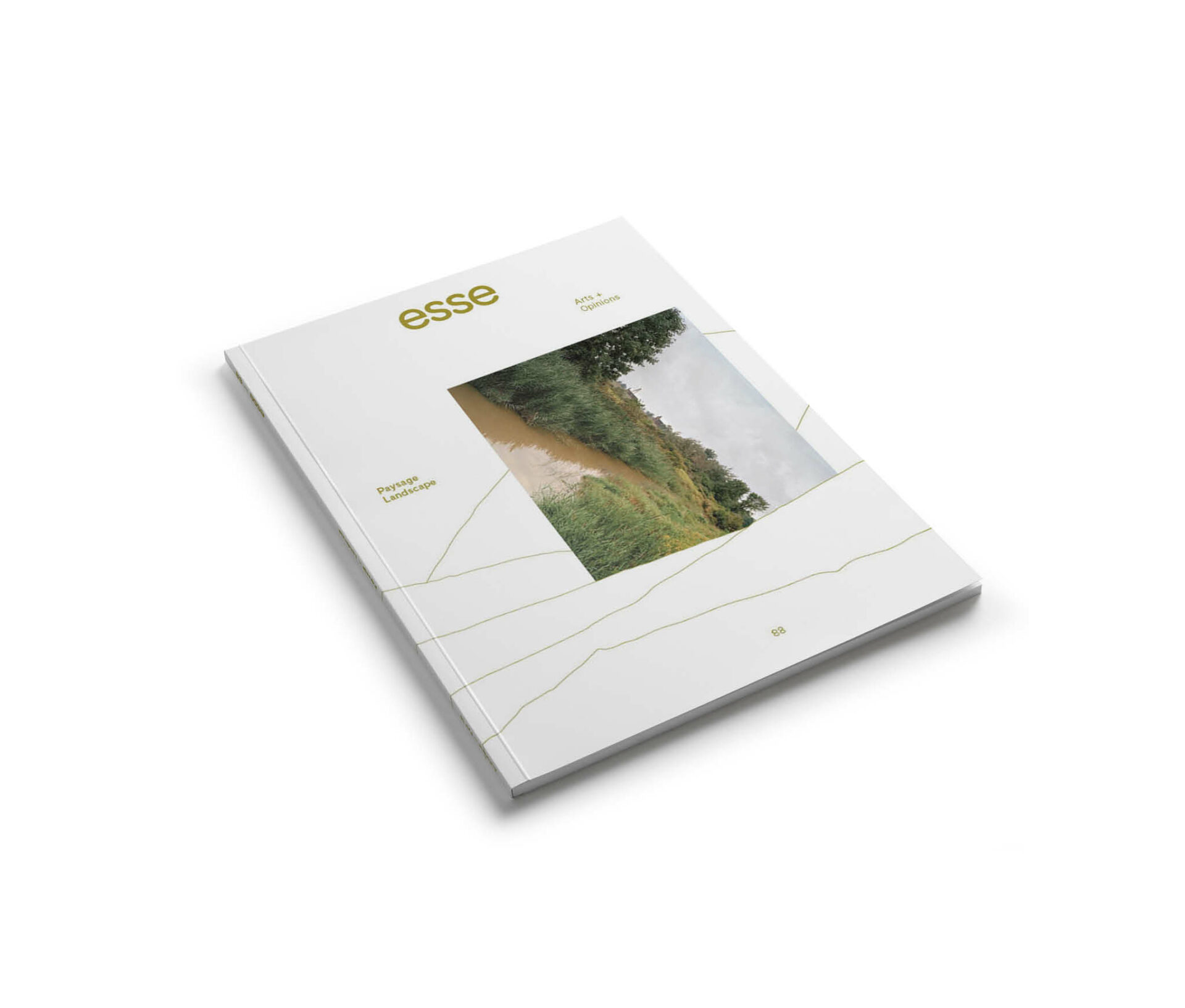
Photo : © Catherine Bodmer
La dissémination est un terme le plus souvent utilisé pour désigner la dispersion de graines, par divers moyens. Elle permet entre autres aux plantes de coloniser de nouveaux milieux. – Source : Wikipédia
In recent years, environmentalism has challenged anthropocentrism, a concept of the world based on human experience and values. The anthropocentric paradigm, which relates everything to humankind, led to an objectification of nature. Then, as a result of the environmental awareness that developed in the 1960s, ecocentrism emerged as a new paradigm, one that values biodiversity and the interrelation of different life forms. In The Three Ecologies (1989), philosopher and psychoanalyst Félix Guattari draws on the concept of ecosophy, which considers the relations between environment, society, and human subjectivity, to challenge the binary opposition between nature and culture. Guattari calls for micropolitical actions and aesthetic practices that can help individual and collective subjectivities re-envision how to live together.

Les paradis de Granby – Fig. 4, 2014–2015.
Photo : © Catherine Bodmer
[In French] La dormance qualifie un état de vie ralentie. C’est le stade de repos végétatif d’une plante destiné à lui permettre de passer une période biologiquement défavorable. (…) Pendant la dormance, l’activité métabolique est très réduite voire non mesurable : il n’y a pas de synthèses, ni d’échanges, ni de croissance, ni de respiration, ni de production de chaleur, et l’activité est limitée au minimum indispensable pour maintenir les structures cellulaires. – Source : aquaportail.com
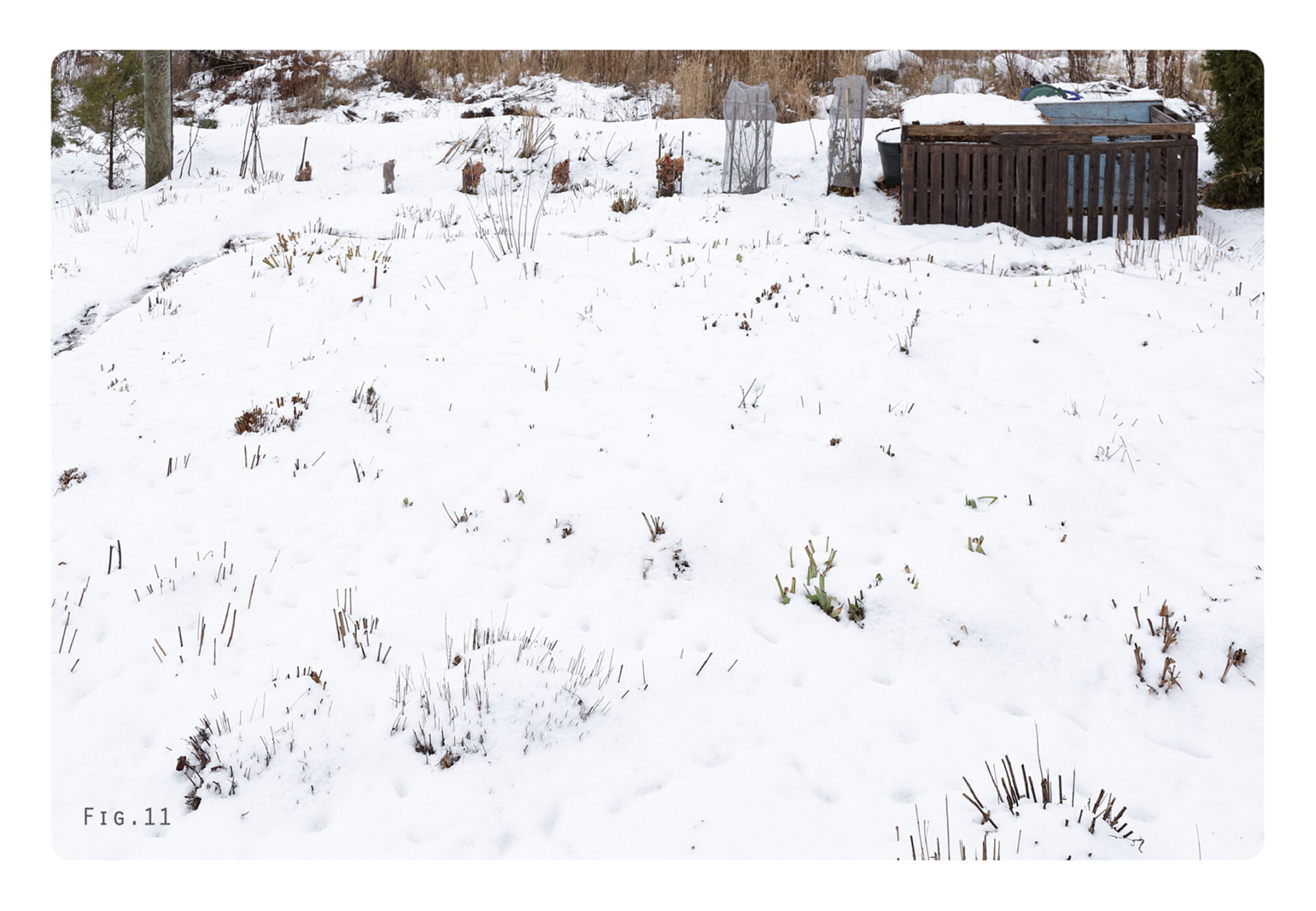
Les paradis de Granby – Fig. 11, 2014–2015.
Photo : © Catherine Bodmer
[In French] Son terrain de 6 hectares lui servit de laboratoire ; elle y expérimenta ses associations de plantes et aiguisa son habilité à appliquer à son jardin la théorie des couleurs de la peinture. [Gertrude] Jekyll utilisait littéralement les plantes comme des touches de couleur et créait des tableaux dans ses plates-bandes. Cette attitude était totalement novatrice, et son partenariat avec [l’architecte sir Edwin] Lutyens donna naissance à un nouveau style de jardin, dans l’esprit Arts and Crafts. – Jardin de Gertrude Jekyll à Munstead Wood, Surrey (RU). 1897. Le musée des jardins. Phaidon. 2002.
Art practices that relate notions of environment and community have the potential to make us rethink human behaviour with regard to nature. The project Les paradis de Granby, carried out by artist Catherine Bodmer, explores the notion of reciprocity and the arrangement of our everyday environments. During a residency at the 3e impérial art centre, Bodmer collaborated with five gardeners from the Granby Horticultural Society, who welcomed her into their gardens over the course of four seasons, from September 2014 to September 2015. The artist drew inspiration from these interactions, taking photos of home gardens and producing a collection of forty postcards, published as an artist’s book.
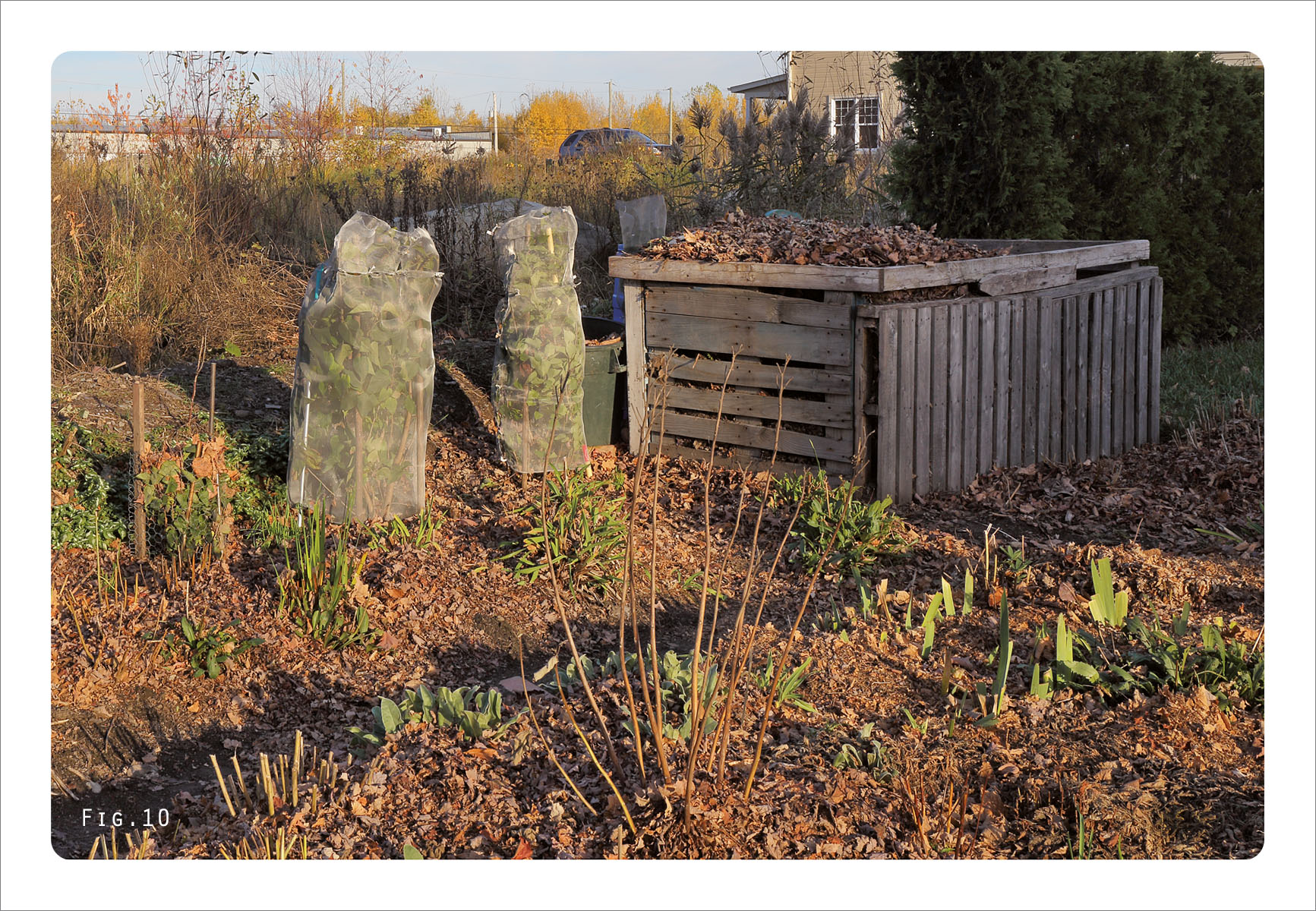
Les paradis de Granby – Fig. 10, 2014–2015.
Photo : © Catherine Bodmer
[In French] Il n’y a plus rien à voir, c’est fini. – MP
Excerpts from conversations with the participants or quotations from essays on gardens and the notion of paradise are transcribed on the back of the postcards. One passage explains that the etymology of the word “garden” is “an enclosure, a space reserved for humankind, where nature (plants, water, animals) is arranged in such a way so as to provide pleasure for humankind.” 2 2 - Pierre Grimal and Maurice Levy, “Jardins : De l’Antiquité aux Lumières,” Encyclopædia Universalis, cited in Les paradis de Granby, Catherine Bodmer et al., fig. 18, 2015 (our translation). In religious history, earthly paradise is associated with the symbolic Garden of Eden, from which Adam and Eve were expelled for having committed the original sin. Another excerpt describes how, today, the garden “has become a closed, isolated, detached site; a moment in time; an occasional oasis.” 3 3 - Raymond Gervais, “Du jardin en musique,” Parachute 44 (1986), cited in Les paradis de Granby, Catherine Bodmer et al., fig. 41, 2015 (our translation). For a long time, the garden form thus represented an absolute ideal where humans could construct a moral order based on a harmonious relationship between people and the natural environment.4 4 - Richard H. Grove, Green Imperialism: Colonial Expansion, Tropical Island Edens and the Origins of Environmentalism,1600 — 1860 (New York: Cambridge University Press, 1995), 13. According to philosopher Michel Foucault, the garden represents the oldest example of heterotopias, which have the potential to reconcile contradictory spaces.5 5 - Heterotopias exist in multiple forms in real locations, out of synch relative to the time of any one place, yet simultaneously locatable. See Michel Foucault, “Of Other Spaces, Heterotopias,” trans. Jay Miskowiec, Architecture, Mouvement, Continuité 5 (1984): 48 — 49. Inside a garden, nature and culture cohabitate and cannot be conceptualized separately, because this landscape is created through the interrelation between different life forms.

Les paradis de Granby – Fig. 41, 2014–2015.
Photo : © Catherine Bodmer
[In French] L’histoire de notre civilisation oscille entre l’idée du jardin Éden, d’une part, et sa contrepartie, le jardin des Oliviers. (…) L’Éden ou jardin d’origine était d’après la Bible un lieu de félicité, hors du temps, du labeur, de l’histoire. (…) Puis avec la désobéissance (le péché originel) et le châtiment, le jardin qui auparavant occupait tout l’espace devint un lieu clos, isolé, à part ; un moment dans le temps ; une oasis occasionnelle désormais inscrite dans l’histoire (bref, un rappel de l’origine, du bonheur perdu). Le jardin des Oliviers était donc un de ces fragments évocateurs du jardin global. En tant que lieu du rachat, de l’expiation de la faute originelle, il devint le tremplin vers une réintégration possible dans l’Éden. – Raymond Gervais. Du jardin en musique. Parachute no. 44. 1986
In Les paradis de Granby, a human subject uses the medium of photography to represent an object, namely the garden. However, the project reconsiders the relation between subject and object in how it bases this relation on the sensory experience of a garden, rather than on remote observation. For example, Bodmer draws on the advice and gifts she receives from the gardeners to experiment with gardening in her Montréal apartment, and documents the process on the project’s blog.6 6 - Catherine Bodmer, Les paradis de Granby, project blog, 2014 — 2015, http://lesparadisdegranby.blogspot.ca/. The postcard format recalls images of picturesque landscapes or tourist attractions. As a communication tool, the postcard traces a path between people and geographical locations, while also evoking a moment that is frozen in time and space.7 7 - Johanne Sloan, “Postcards and the Chromophilic Visual Culture of Expo 67,” Expo 67: Not Just a Souvenir, ed. Rhona Richman Kenneally and Johanne Sloan (Toronto: University of Toronto Press, 2010), 186 — 187. However, Bodmer’s photographs move away from the idealized representation of landscape in scenic photographs. Each postcard depicts a section of a garden the artist visited at a specific time of the year, while the series as a whole composes a portrait of the different gardens over a cycle of the seasons.
Historian Marina Moskowitz posits that humans construct the landscape, not only by leaving their mark, but also by choosing how and by which means to frame it. The landscape can thus be considered to be a source of historical information along with artifacts. The history of social, cultural, economic, and political relations can be observed in certain physical markers, such as the size and shape of the yard, the presence or absence of fences, and the layout of the buildings or gardens.8 8 - Marina Moskowitz, “Backyards and Beyond: Landscapes and History, History and Material Culture: a Student’s Guide to Approaching Alternative Sources, ed. Karen Harvey (New York and London: Routledge, 2009), 67 — 72. Through her photography practice, Bodmer delineates a site and examines its components.9 9 - 3e impérial, “Catherine Bodmer,” http://3e-imperial.org/artistes/catherine-bodmer. Her garden photographs reveal the characteristics of the environment, the different personalities of the gardeners, as well as the gardening process, including the craftsmanship, composting, storing of materials, and seed preparation. Behind every vision of a garden are different sources of inspiration and influences, as well as various value systems, types of knowledge, skills, and spatial and economic constraints.

Les paradis de Granby – Fig. 35, 2014–2015.
Photo : © Catherine Bodmer
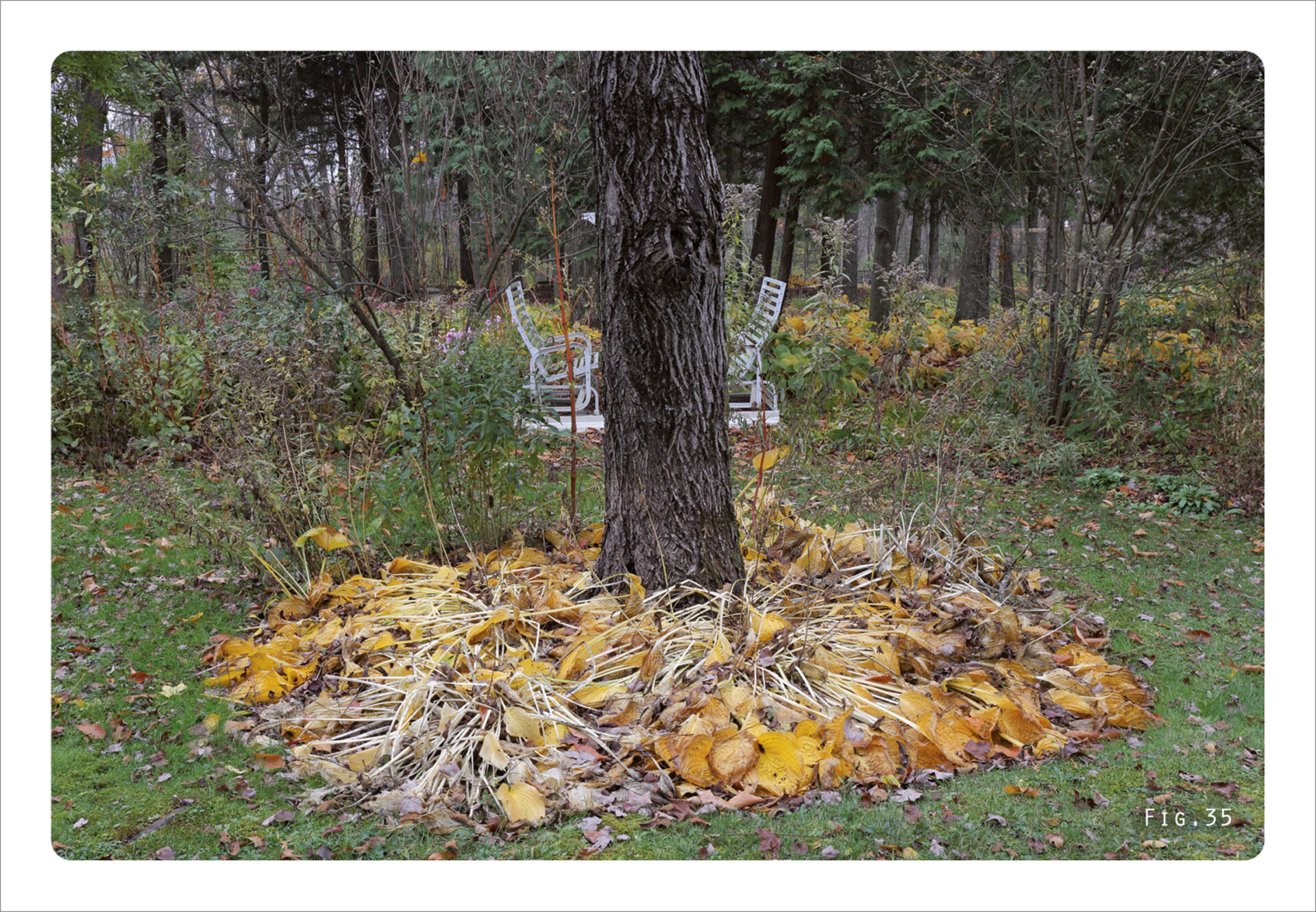
Bodmer further states that her interactions with the gardeners enabled her to take a practical stance on gardening so as to reconcile her garden ideal with day-to-day reality.10 10 - Catherine Bodmer, conversation with the artist, Montréal, November 22, 2015. Off-season gardening became a means of drawing attention to something besides the outcome and to attest to a process, a relation to the garden, and the conversations with the participants. In the introduction to her postcard collection, she emphasizes the importance of reciprocity in her method: “I have noticed that when I pay attention to a particular subject — the garden, in this case — the subject seems to turn towards me, gradually revealing its complexity, its multiple aspects and histories. However, all its richness was always already there, but my perception simply grazed its surface without penetrating it. Perhaps this reciprocal relation is what actually gives things their existence.” 11 11 - Catherine Bodmer, Les paradis de Granby, fig. 1, 2015 (our translation).
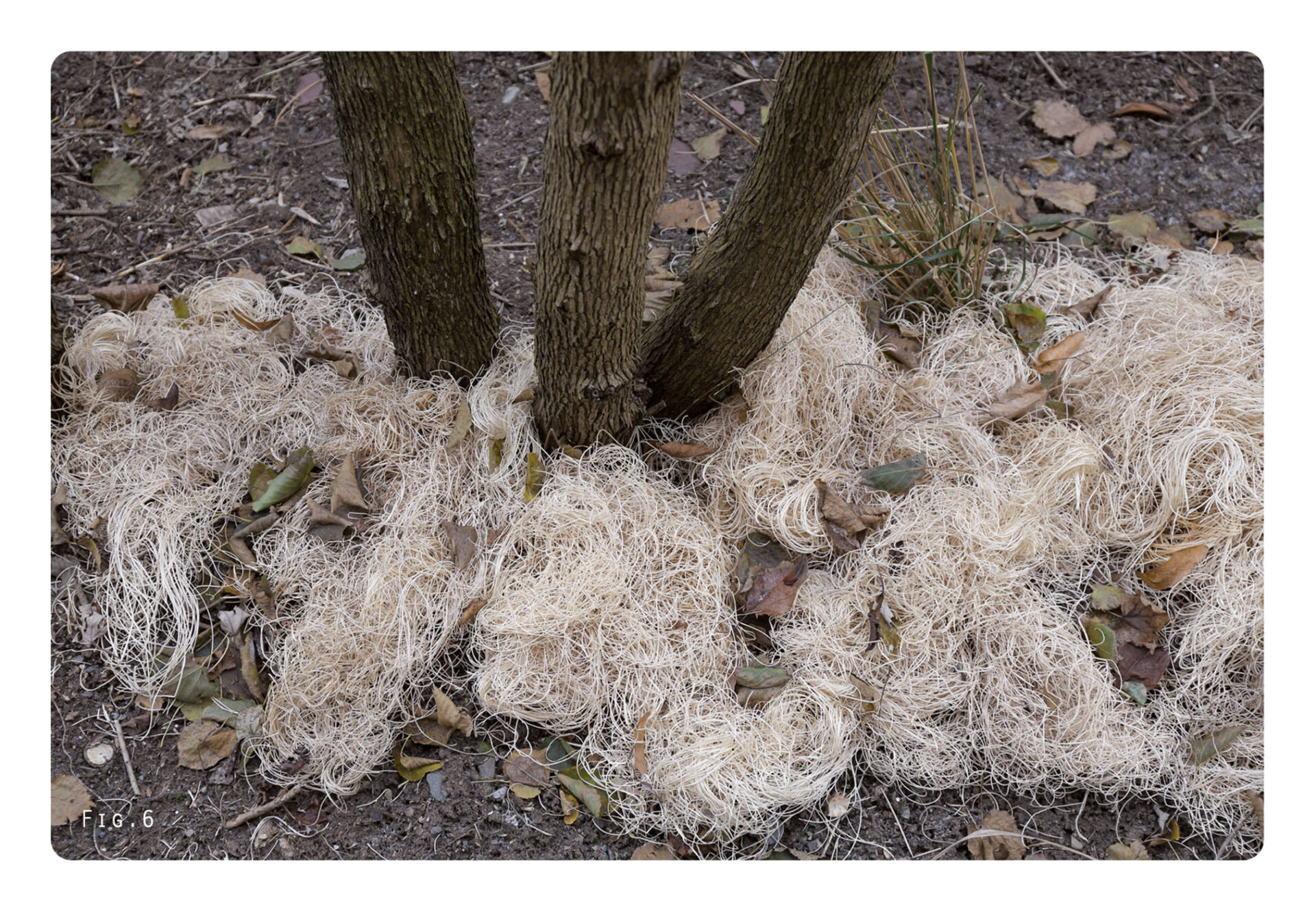
Les paradis de Granby – Fig. 6, 2014–2015.
Photo : © Catherine Bodmer
[In French] On voit la structure du jardin, dit R., c’est avec les arbres et les arbustes qu’on commence. Ensuite, les autres plantes et les fleurs viennent remplir les trous.
Based on reciprocity, the dialogic approach of Les paradis de Granby blurs the dichotomy between subject and object, thus challenging the anthropomorphic perspective whereby humankind dominates nature. While Bodmer’s project focuses on an interhuman perspective based on the experience of the artist and the participants, her interest in off-season gardening allows her to envision a transformation of the status and function of the historical garden. Allowing for the chaotic and cyclical dimension of nature, the artist’s photographs move away from the garden’s aesthetic standard of order. This aspect of the project forms a contrast to the postcard medium, thus re-envisioning the representation of nature in photography. The principle of reciprocity, at work in every step of the process and in the outcome of Les paradis de Granby, helps redefine the relation between humankind and landscape, between the gardener and their garden.
Translated from the French by Oana Avasilichioaei
